Die STUVA gibt uns noch einmal die Gelegenheit, mit unseren Kunden und Partnern auf 25 Jahre VMT anzustoßen, die gemeinsame Vergangenheit Revue passieren zu lassen, aber vor allem zusammen in die Zukunft zu schauen.
Wir freuen uns, unsere Gäste auf unserem Stand D153 (schräg gegenüber dem Herrenknecht Stand) begrüßen zu dürfen.
Hier erwarten Sie

- VMT-Produktinnovationen bei unseren Softwarelösungen und Hardware-Komponenten im Bereich Navigations- und Ergänzungssysteme, neue App-Entwicklungen und noch einiges mehr
- Leckere Schmankerln in flüssiger und fester Form aus unserer badischen Heimat
The S21 Stuttgart–Ulm rail project involves the complete restructuring of the Stuttgart rail hub plus the construction of a new line between Wendlingen and Ulm. It is the largest upgrading project for public rail transport in Baden-Württemberg region since the 19th century and is currently one of the largest construction projects in Germany.
As part of this construction project the Fildertunnel forms a twin bore rail tunnel where mechanized excavation started in 2014 utilising a Herrenknecht Multi-mode TBM with a diameter of 10.82 m.
The twin bore comprised the tunnelling of two 9.5 km long tunnels with included curves of minimum radius 2,300 m.
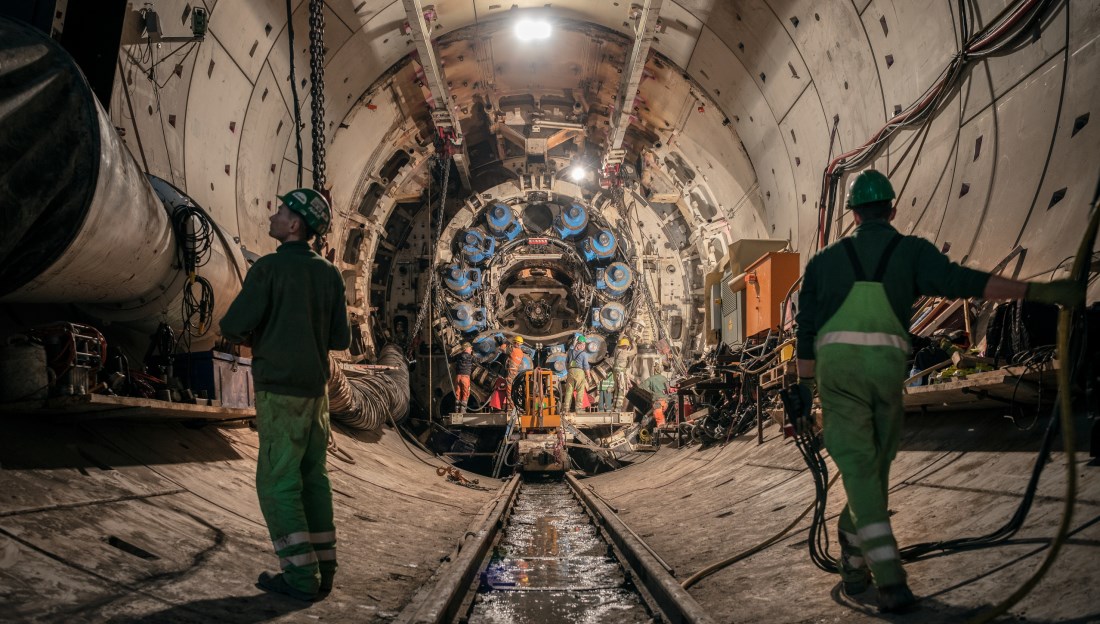 Work first started on the Fildertunnel in November 2014. Tunnelling was completed in four sections with the first breakthrough occurring in November 2015, the second in July 2017, the third in July 2018 and the final breakthrough occurring in September 2019.
Work first started on the Fildertunnel in November 2014. Tunnelling was completed in four sections with the first breakthrough occurring in November 2015, the second in July 2017, the third in July 2018 and the final breakthrough occurring in September 2019.
TBM guidance throughout the various tunnelling sections of the project was provided and supported by VMT, which has its offices close to the project site. The VMT navigation used for the project was the TUnIS Navigation TBMLaser system. Based on a total station and a target unit installed within the TBM shield, it determines the current advance position. Even for segment machines using a small or limited laser window, the machine position is continuously calculated during short-term interruptions. TUnIS Navigation TBMLaser offers high reliability since it provides temporary navigation through the thrust cylinders with the aid of the newly developed TUnIS Track Assistant system.
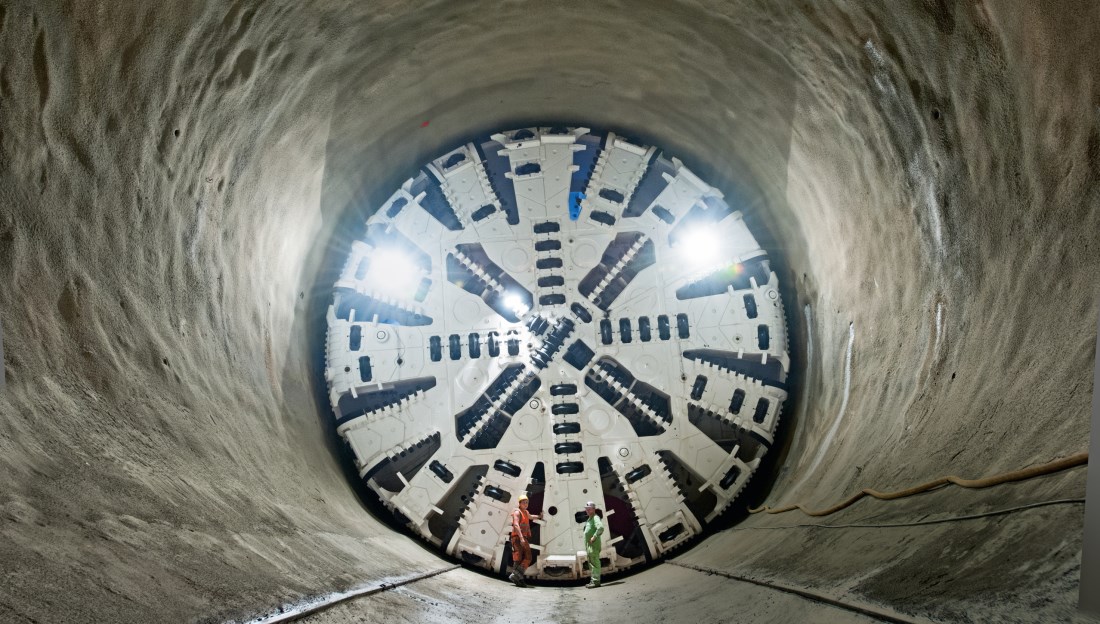 An IRIS system (now known as VDMS – VMT Data Management System) was also utilised on the project. IRIS/VDMS processes and correlates data from a variety of different sources, analyses them and displays them in user-friendly form so that they can be made available to project managers on site or worldwide in a wide range of output forms. The system ensures full information and transparency and supports the efficient control of both the TBM and also many other operating processes within tunnelling projects. As a web-based system, the system can be operated easily from any internet browser on site or as in this case the system can be located locally, solely on site.
An IRIS system (now known as VDMS – VMT Data Management System) was also utilised on the project. IRIS/VDMS processes and correlates data from a variety of different sources, analyses them and displays them in user-friendly form so that they can be made available to project managers on site or worldwide in a wide range of output forms. The system ensures full information and transparency and supports the efficient control of both the TBM and also many other operating processes within tunnelling projects. As a web-based system, the system can be operated easily from any internet browser on site or as in this case the system can be located locally, solely on site.
The jobsite experienced few problems however at one stage the TBM was found to be drifting. In association with the tunnelling engineers it was decided to change the setting for the support ring sequencing to compensate for this behaviour, in the calculation of the ring orientation.
At a Glance Fact Sheet:
|
The construction of a new sewage tunnel in Nice, France required a sea outfall to be installed using a tunnelling procedure. Using microtunnelling the sea outfall was designed as a 482 m long installation running along a straight route, holing out on the seabed some 450 m from the shoreline.
The 1,600 mm diameter pipeline was installed with a Herrenknecht AVN1600 using concrete pipes with a wall thickness of 280 mm. A VMT SLS-Microtunnelling LT navigation system provided the guidance necessary to keep the bore on the required line and level.
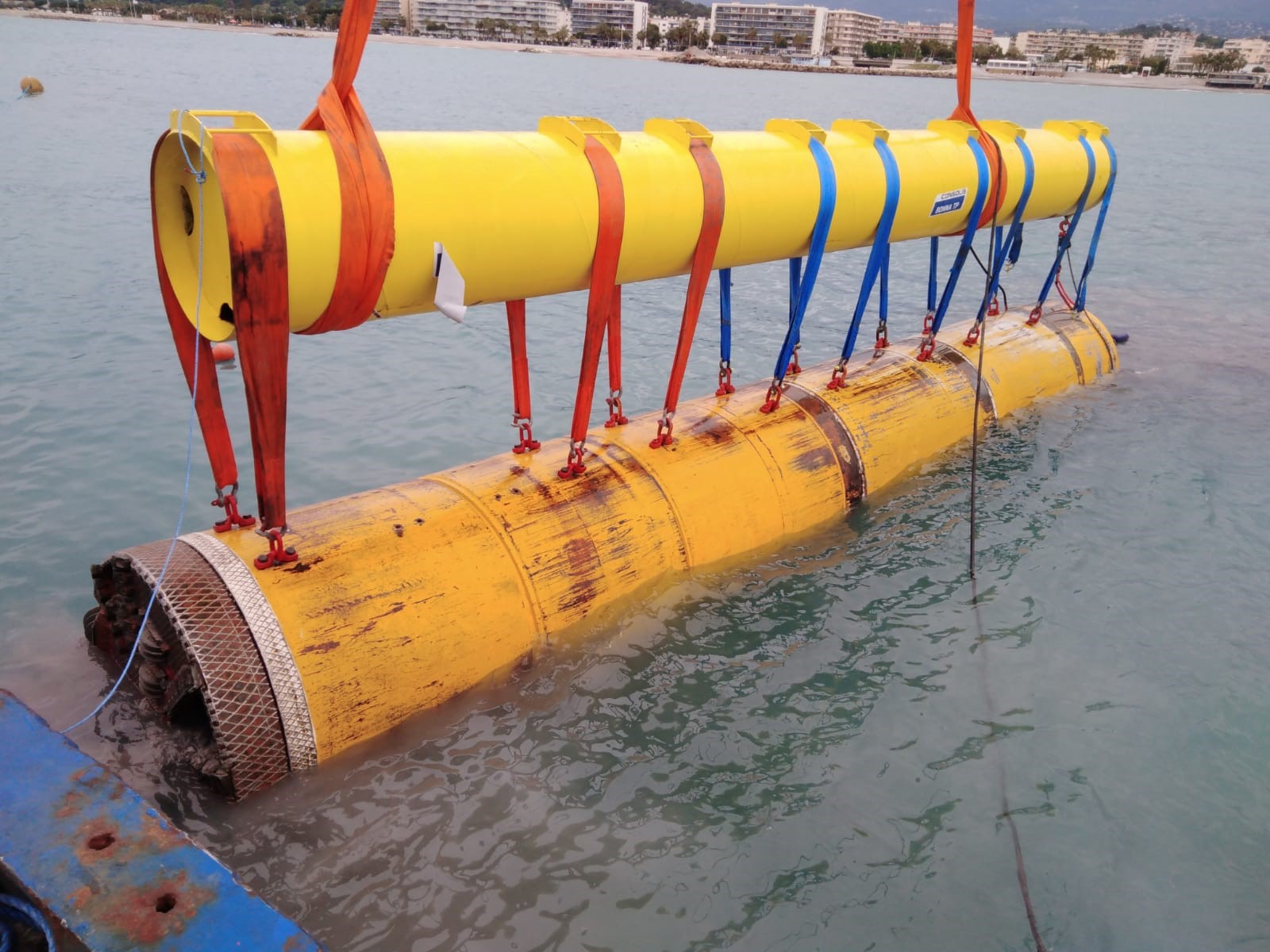 The first 115 m of the straight drive was completed using a laser guidance system already owned by the contractor. Beyond this, however, there was a requirement for a more sophisticated system to ensure the successful completion and accuracy of the drive to its terminus some 400 m further out under the sea. Therefore it was decided to introduce the VMT SLS-Microtunnelling LT system.
The first 115 m of the straight drive was completed using a laser guidance system already owned by the contractor. Beyond this, however, there was a requirement for a more sophisticated system to ensure the successful completion and accuracy of the drive to its terminus some 400 m further out under the sea. Therefore it was decided to introduce the VMT SLS-Microtunnelling LT system.
The contractor, Ludwig Pfeiffer, commented that the selection of the VMT navigation system was an easy one given that the company had worked with VMT on many occasions previously with excellent results. For the Nice project the contractor purchased a brand new SLS-Microtunnelling LT system to utilise.
For the recovery of the machine, a module was installed to remotely disconnect electrical and data cables as well as the slurry line. Then thanks to the previously installed lifting eyes on its upper side, the TBM can be lifted with the support of a dedicated team for the underwater operations. The installation was completed in just 50 days.
Vom 30. September – 02. Oktober findet die International No Dig in Florenz, Italien statt und VMT ist mit dabei.
 Die International No Dig ist eine weltweit einzigartige Veranstaltung zur Förderung der grabenlosen Technologie und führender Innovationen im unterirdischen Infrastrukturmarkt. Die grabenlose Technologie umfasst die Installation, den Austausch oder die Erneuerung von unterirdischen Versorgungsleitungen mit minimalem Aushub und Oberflächenstörungen.
Die International No Dig ist eine weltweit einzigartige Veranstaltung zur Förderung der grabenlosen Technologie und führender Innovationen im unterirdischen Infrastrukturmarkt. Die grabenlose Technologie umfasst die Installation, den Austausch oder die Erneuerung von unterirdischen Versorgungsleitungen mit minimalem Aushub und Oberflächenstörungen.
Besuchen Sie uns auf unserem Stand Nummer 5, auf dem wir uns zusammen mit unserem Mutterkonzern Herrenknecht präsentieren.
Verpassen Sie auch nicht Jürgen Göckel‘s Vortrag zum Thema “TUnIS Navigation E-Power Pipe – Precise guidance of small diameter tunnelling machines”. Die technische Session findet am Montag, 30 September von 14-16:00 Uhr im Raum A statt.
The Award winning E-Power Pipe® system, which was developed by Herrenknecht AG as a new method for the quick and secure installation of small-diameter cable protection pipes underground for drive lengths of over a kilometre, was recently employed to complete a project in Bacharach, Germany.
The works comprised the boring of six (6) 688 m long, 505 mm diameter ducts for the installation of high voltage power cables as part of the Bacharach Erdkabelanbindung project. The installation was complicated by the fact that the routes of all six ducts was required to include a 506 m radius curve.
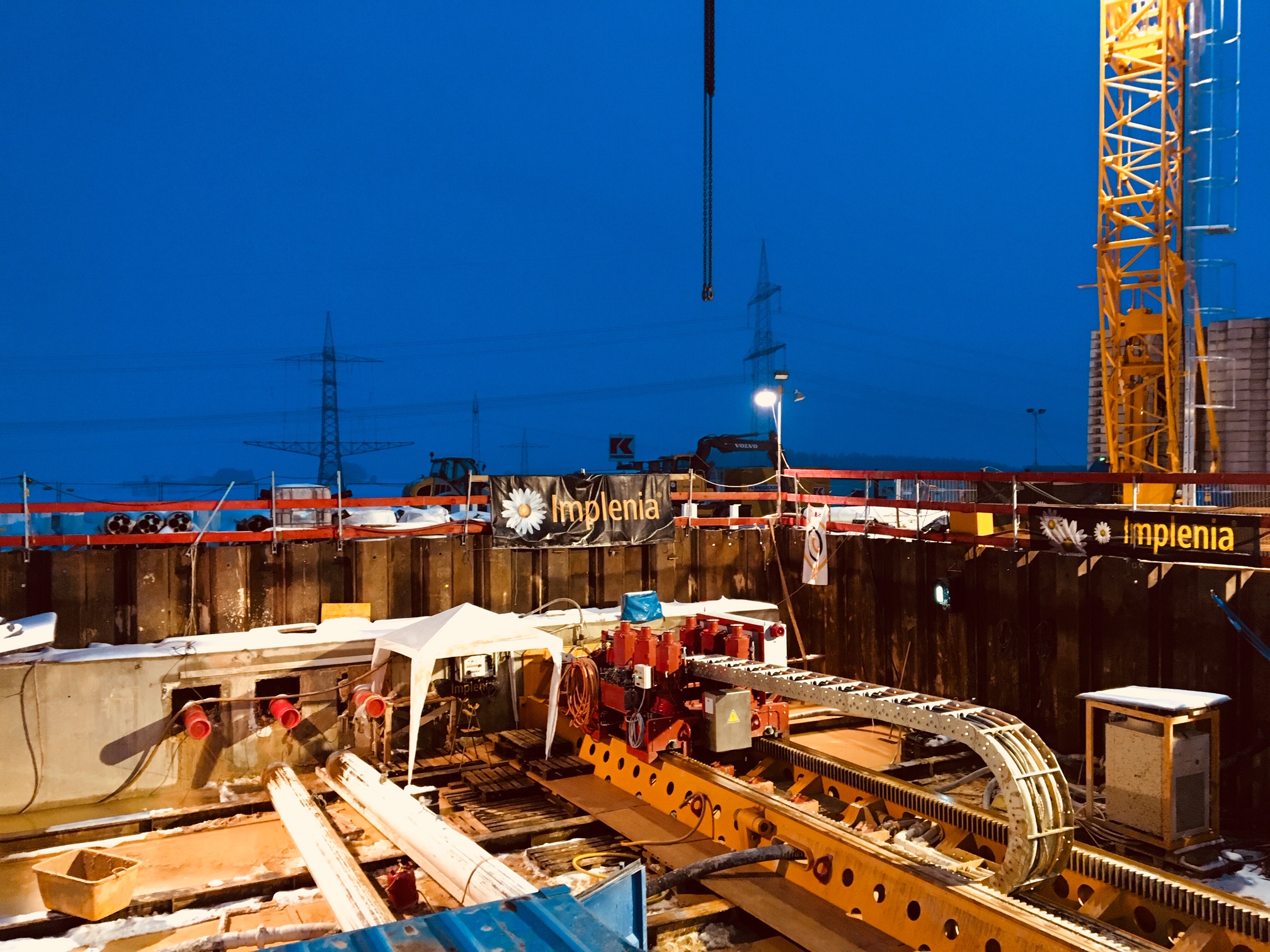 The E-Power Pipe® system is a small diameter microtunnelling arrangement that in this instance utilised a Herrenknecht AVNS350XB microtunneller. The challenge for the project was that, with the combination of the included curve and the long distance, guidance for the small diameter microtunneller was a challenge.
The E-Power Pipe® system is a small diameter microtunnelling arrangement that in this instance utilised a Herrenknecht AVNS350XB microtunneller. The challenge for the project was that, with the combination of the included curve and the long distance, guidance for the small diameter microtunneller was a challenge.
To overcome this, the contractor called on tunnel navigation specialist VMT’s expertise to design a special guidance system to provide the necessary accuracy for the bores. The system developed utilised two proven techniques which included both a Gyro MWDII and a Paratrack 2 System (magnetic probe).
VMT’s challenge was to provide a guidance system that would not only ensure accuracy of the individual bores but also handle the challenging environment which included high voltage power lines which crossed the site which, as the project proceeded, led to erroneous readings with the Paratrack 2 System.
The project was something of a pilot project in that the systems had not been used like this in combination before. However it was decided that the comparison of the sensor data from both navigation devices would provide sufficient data to show if the navigation system could be trusted. Manual measurements with a TCA showed that the vast majority of the data from the magnetic probe was very useable. Where any minor discrepancies from the magnetic probe did occur this could be adjusted for by using the data from the gyro, so at no time was there any potential for the microtunneller to operate without confidence in the steering.
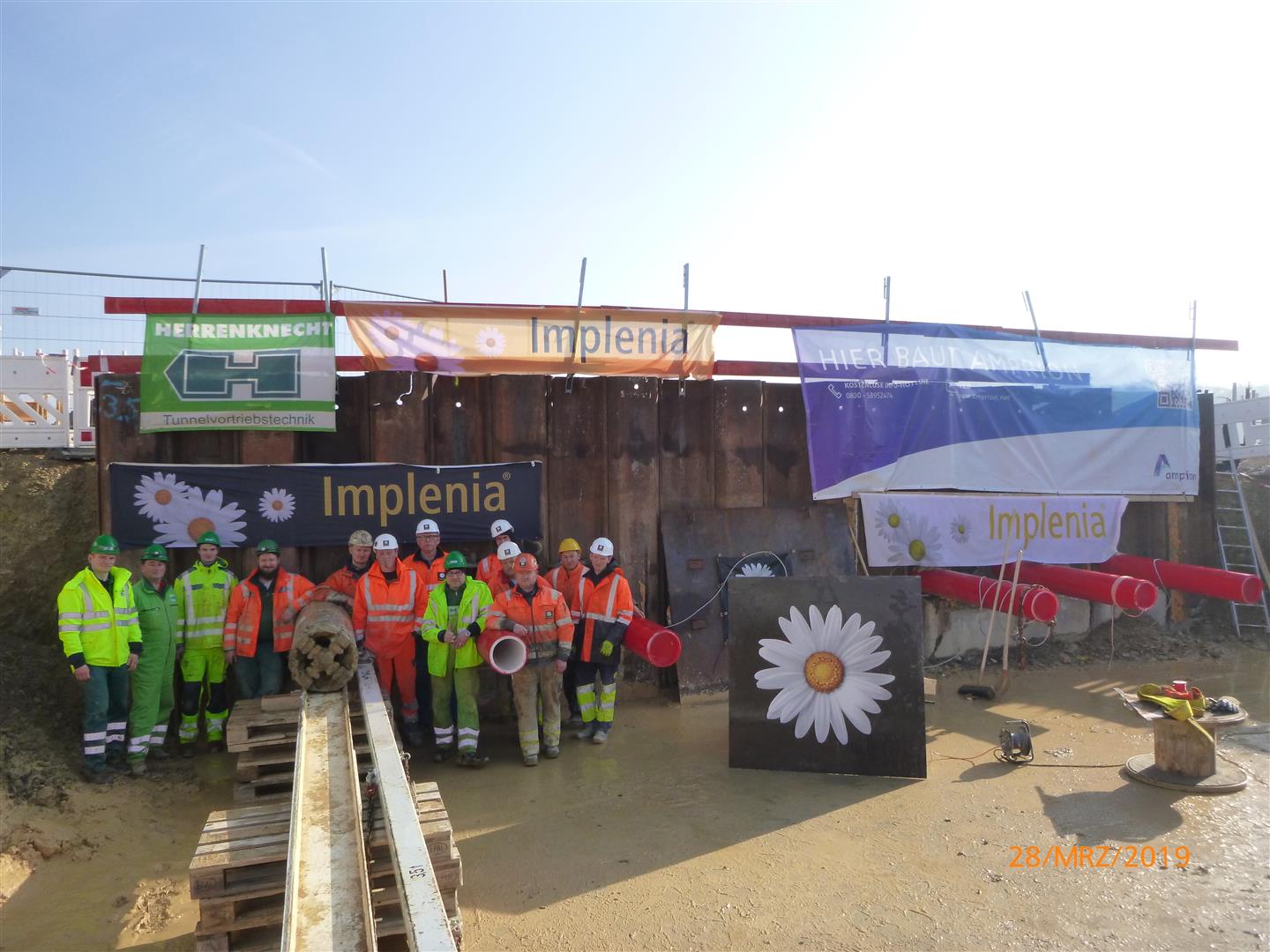 The fact that the personnel involved had no experience of such a system did not deter VMT’s staff and with a lot of new enhancements to VMT’s guidance software prior to the project a system was developed that it was believed would provide the accuracy required.
The fact that the personnel involved had no experience of such a system did not deter VMT’s staff and with a lot of new enhancements to VMT’s guidance software prior to the project a system was developed that it was believed would provide the accuracy required.
Ultimately on the successful completion of the bores the VMT system utilised by the E-Power Pipe® system proved to be a very suitable guidance solution for TBMs without a line of sight available and where no conventional control measurements were possible as all drives reached their target.
According to the VMT crew onsite for the works: “We learned a lot about the system during the advance and were able to gradually reduce the service on site and transfer more automation in the process as the project was ongoing.”
At a Glance Fact Sheet:
|
